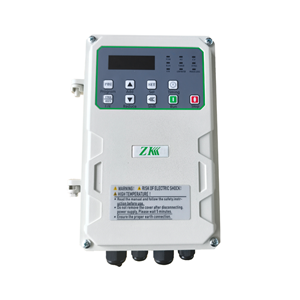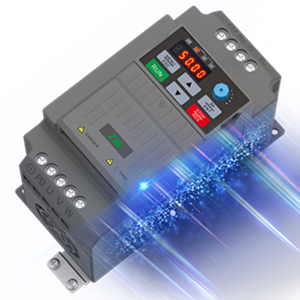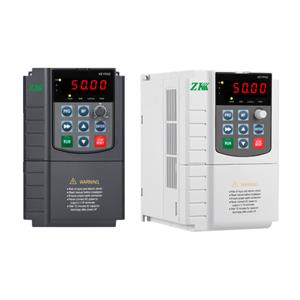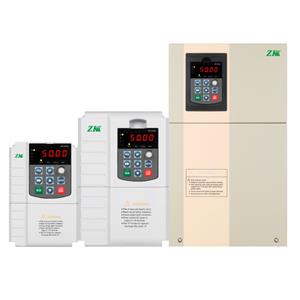AI in Inverter Fault Diagnosis
Inverters, the critical components converting DC to AC power, are essential to modern industry and renewable energy systems. Failure of inverters can cripple production lines, halt essential services, or disconnect solar farms from the grid, incurring massive costs. Traditional fault diagnosis for inverters, often reliant on manual expertise, predefined thresholds, and signal analysis techniques (like Fast Fourier Transforms - FFT), struggles with the complexity, noise, and subtle early-warning signs inherent in inverter operation. Enter Artificial Intelligence (AI), transforming inverter fault diagnosis from reactive troubleshooting to proactive, precise, and predictive maintenance.
Beyond Thresholds: Embracing Complexity with Data-Driven Insights
The core strength of modern AI lies in its ability to learn intricate patterns from vast amounts of inverter operational data – voltages, currents, temperatures, switching frequencies, vibration – that overwhelm traditional methods. Machine Learning (ML) algorithms, particularly supervised learning models like Support Vector Machines (SVMs), Random Forests, and increasingly Deep Neural Networks (DNNs), excel at classification. Trained on historical inverter data labeled with known fault conditions (short circuits, open circuits, IGBT failures, capacitor degradation, gate driver issues), these models learn the subtle "fingerprints" of impending or active faults within the complex signal soup of inverters. They can distinguish between a harmless transient and the early signature of a failing inverter component with far greater accuracy than fixed thresholds.
Unsupervised Learning: Finding the Unknown Unknowns
Not all inverter faults are anticipated or have labeled historical examples. This is where unsupervised learning shines. Techniques like clustering (K-Means, DBSCAN) and anomaly detection (Autoencoders, One-Class SVMs) analyze normal inverter operational data to establish a baseline. They then flag significant deviations as potential anomalies or incipient faults in inverters, even if the exact nature of the fault is unknown. This is crucial for detecting novel inverter failure modes or subtle degradation processes that haven't been cataloged before, enabling maintenance before catastrophic inverter failure.
Deep Learning: Mastering the Temporal Dimension
The most significant modern leap comes from Deep Learning (DL), especially models adept at handling sequential inverter data:
1. Convolutional Neural Networks (CNNs): Traditionally used for image recognition, CNNs are incredibly effective at identifying spatial patterns in inverter time-series data converted into 2D representations like spectrograms or Markov Transition Fields (MTFs), revealing fault signatures invisible in raw inverter waveforms or simple FFTs.
2. Recurrent Neural Networks (RNNs) & Long Short-Term Memory (LSTM) Networks: These architectures explicitly model temporal dependencies in inverter signals. They can learn the evolution of inverter signals over time, crucial for detecting faults that manifest as changes in inverter dynamic behavior (e.g., oscillations developing during startup or load changes) or for predicting the Remaining Useful Life (RUL) of inverter components based on gradual degradation trends.
The Modern AI Toolkit: Enabling Widespread Deployment
Modern inverter applications leverage more than just algorithms:
· Edge AI: Deploying lightweight ML/DL models directly onto microcontrollers within inverters or local gateways enables real-time, on-device inverter fault diagnosis. This eliminates cloud latency, crucial for fast-acting inverter faults, and reduces bandwidth needs while enhancing security and reliability, especially in remote locations like wind farms.
· Cloud Platforms & Big Data: Centralized cloud platforms aggregate data from fleets of inverters. Sophisticated AI models analyze this vast dataset for fleet-wide inverter health insights, identifying systemic issues, optimizing inverter maintenance schedules across multiple assets, and continuously refining inverter diagnostic models through federated learning.
· Digital Twins: Creating high-fidelity virtual replicas of physical inverters allows AI models to simulate various inverter fault scenarios and stress conditions. This is invaluable for training robust inverter diagnostic models without risking physical hardware, testing new algorithms for inverters, and predicting inverter fault propagation.
· Transfer Learning: Pre-training large models on vast, related datasets (e.g., general time-series anomaly detection, motor fault data) and then fine-tuning them on specific inverter data significantly reduces the need for massive, labeled inverter fault datasets, accelerating inverter AI deployment.
Benefits Driving Adoption
The impact on inverter management is tangible:
· Reduced Downtime: Early, accurate inverter fault detection minimizes unplanned outages.
· Lower Maintenance Costs: Shift from costly reactive inverter repairs or rigid schedules to efficient predictive maintenance (PdM) for inverters, optimizing resource use.
· Extended Inverter Lifespan: Proactive intervention prevents minor inverter issues from escalating into catastrophic failures.
· Enhanced Safety: Early detection of critical inverter faults (like short circuits) prevents hazardous situations.
· Improved System Reliability: Especially vital for grid stability with increasing renewable integration reliant on inverters.
Challenges and the Path Forward
Challenges for AI in inverter fault diagnosis remain: securing high-quality, labeled inverter training data; ensuring model robustness across diverse inverter operating conditions and inverter types; managing computational complexity, especially for inverter edge deployment; and building trust in AI "black box" decisions for inverters (explainable AI - XAI is gaining traction here). Data privacy and security in cloud-based inverter monitoring systems are also paramount.
AI is no longer a futuristic concept in inverter fault diagnosis; it's a present-day revolution. By harnessing the power of machine learning, deep learning, and modern computing paradigms (edge, cloud), AI acts as a tireless, highly sensitive sentinel for inverters. It delves deep into complex inverter operational data, uncovering subtle fault signatures long before traditional methods can react, enabling a paradigm shift towards predictive maintenance and unprecedented levels of inverter reliability and efficiency. As AI techniques continue to evolve and integrate with industrial IoT and digital twins, the intelligence safeguarding our critical inverter-based power conversion infrastructure will only become more sophisticated, ensuring the smooth flow of power that underpins modern life.




